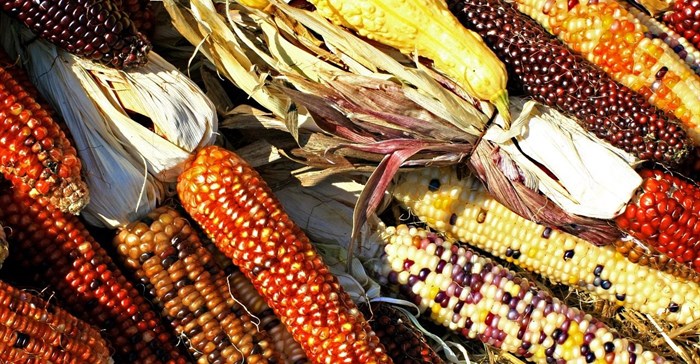Healthy ecosystems provide a number of key services upon which humankind relies, such as water quality maintenance, nutrient cycling, soil formation and erosion control, and carbon sequestration. Together with healthy agricultural ecosystems, its provides the ecological foundations for food production, with biodiversity of crops and livestock playing a critical role in humankind.
But today, planetary biodiversity – genetic diversity at the level of organisms; diversity at the species level; and diversity ecosystem level – faces a number of threats, Graziano da Silva noted. "The way we are producing our food is a big part of the problem. Today, the world still produces food mainly based on the principles of the Green Revolution that started more than 50 years ago and implies the use of high chemical inputs at a high cost for the environment."
Yet, he also noted that massive swaths of the Earth's surface are being used to grow food, raise animals, capture and farm fish, or produce forest products. This means that if managed sustainably – with biodiversity as a priority – the agricultural sector can make significant contributions to protecting biodiversity. "This renders promoting and facilitating the mainstreaming of biodiversity across all agricultural sectors "fundamental."
A toolbox for feeding a warmer, more crowded world
The genetic diversity of plants can be used to develop crop strains able to tolerate or thrive in hotter and drier conditions. Similarly, genetic diversity in animals provides the raw material for farmers and pastoralists to improve their breeds and adapt livestock to changing environments and shifting demands.
"This is especially important nowadays in the face of emerging challenges such as the impacts of climate change, rapid urbanisation and also a growing population with changing diets."
The flip side of the coin is that loss of agricultural biodiversity poses a direct risk to food security, however. "Only three staple crops – rice, maize and wheat – and three animal species – cattle, pigs and chicken – provide the majority of food energy intake in the world."
Greening agriculture
According to FAO, policies governing the agricultural sectors, the use of natural resources, protection and conservation of endangered species, habitats and biodiversity need to be aligned to better protect the environment and reduce the ecological footprint of agriculture, forestry and fisheries. At the farm level, production practices can be implemented that not only safeguard biodiversity but also ensure that food producers will be able to sustainably make use of it.
A series of working groups involving a wide range of stakeholder will focus on different avenues for advancing biodiversity mainstreaming in agriculture, including global governance; national policies and legislation, financial incentives and investments and supply chain measures.
Biodiversity and agriculture: numbers of note
• In 2014, just 200 plants were farmed, with only nine of them (sugar cane, maize, rice, wheat, potatoes, soybeans, oil palm fruit, sugar beet and cassava) accounting for over 66% of all crop production.
• Eight crop species (barley, beans, groundnut, maize, potatoes, rice, sorghum and wheat) provide 53% of average daily calories consumed.
• Three crop species (wheat, rice and maize) represent 48% of average daily calories consumed.
• Of 8,800 known livestock breeds, 7% are extinct, 24% are at risk of extinction and 59% are classified as being of unknown risk status because of lack of data.
• Five animal species (cattle, sheep, goats, pigs and chickens) provide 31% of average daily protein consumed.
• About 3.6 million crop accessions (collections of plant material from a particular location) are conserved in gene banks by 71 countries and 12 international centres, with about half the total holdings belonging to nine major food crops.
• Although crop wild relatives represent about 13% of the world's genebank holdings, about 70% of such species are still missing.
• Protected areas and botanical gardens have expanded by 30% and increased the conservation of crop wild relatives.
• Only ten species provide about 30% of marine capture fisheries.
• Globally, 524 million hectares of forests have been primarily designated for biodiversity conservation.
• Mountain areas host 25% of terrestrial biodiversity, including the gene pool of globally important crops such as maize, potatoes, barley, sorghum, tomatoes and apples.
• Grasslands contain 11%of the world's endemic bird areas and about 750 genera and 12,000 species of grass and contribute to the maintenance of pollinators and other insects that have important regulating functions.
• 1 074, or 12%, of the world's recorded livestock breeds, are considered to be adapted to drylands.
• Pollinators are responsible for 35% of global crop production and play a fundamental role in food production.

























